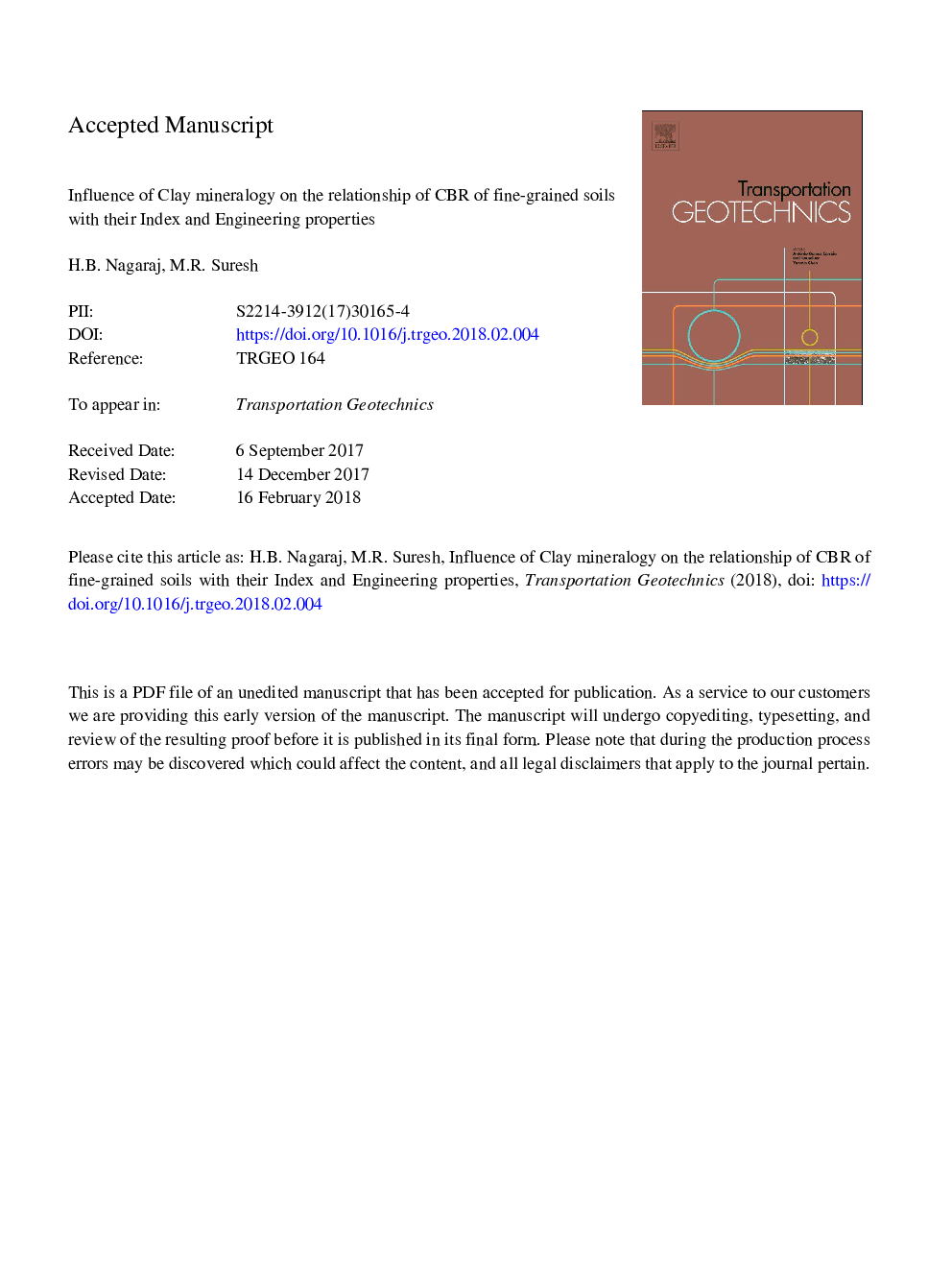| Article ID | Journal | Published Year | Pages | File Type |
|---|---|---|---|---|
| 6779447 | Transportation Geotechnics | 2018 | 45 Pages |
Abstract
Evaluation of California Bearing Ratio (CBR) of subgrade soils used in the design of flexible pavements is quite elaborate and time consuming. Hence, the number of test locations is reduced and as a compromise, the lowest value of CBR adopted for each stretch having nearly similar geological origin, but probably having varied soil properties. This leads to an increased overlay thickness of flexible pavement, and consequent cost of construction. This shortcoming is overcome by predicting CBR through index properties, so that requisite value of CBR can be obtained from more number of soil samples obtained at closer intervals. Hence many attempts have been made in the past to develop correlations equations to predict CBR from simple index properties and also relate it with engineering properties. However, no study has brought out the influence clay mineralogy of the soil in those correlations. Findings from this study show that, clay mineralogy of soil has a significant influence on both CBR (indirect measure of strength) and Unconfined Compression strength (UCC) (direct measure of strength), having separate relationships based on whether the soil is kaolinitic or montmorillonitic. This observed mineralogical is reasoned out based on the mechanisms controlling undrained strength of clays. The developed correlations to predict CBR would serve as a valuable tool to have independent check on the large data of laboratory evaluated CBR values in routine engineering practice.
Keywords
Related Topics
Physical Sciences and Engineering
Earth and Planetary Sciences
Geotechnical Engineering and Engineering Geology
Authors
H.B. Nagaraj, M.R. Suresh,
